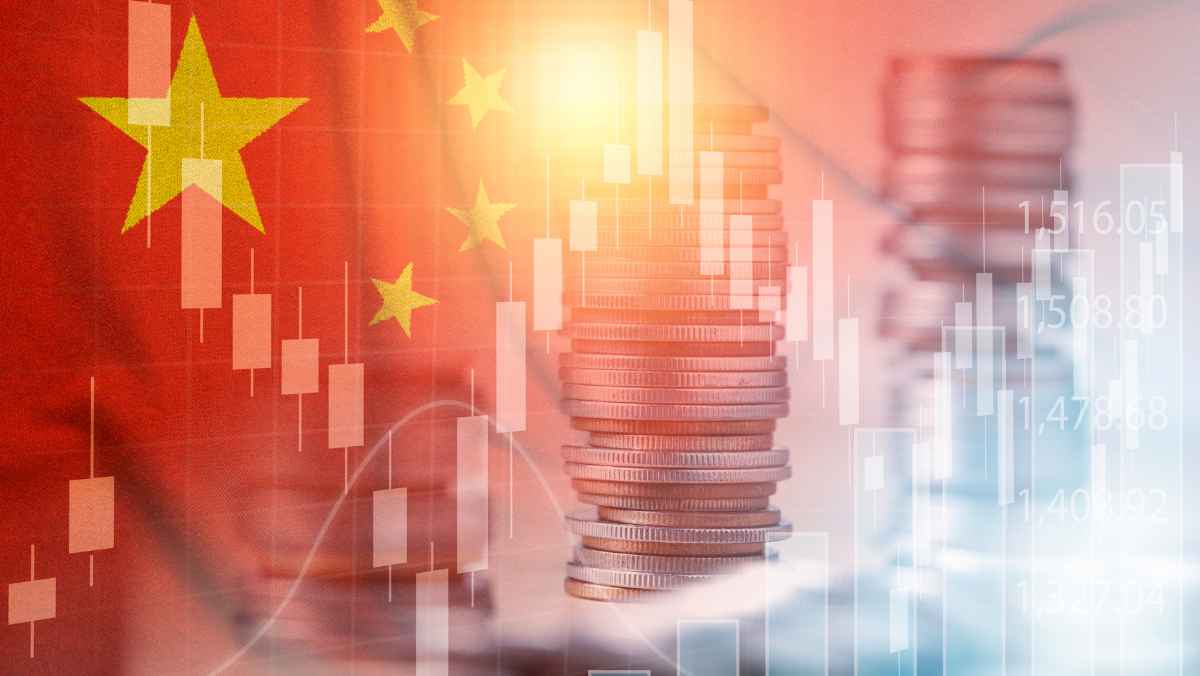Wednesday May 3 2023 10:13

12 min

China’s a divisive place for investors, but its enormous economic growth suggests it holds great potential. Want to invest in China? Here’s what to watch out for.
Here’s how to invest in China:
The first thing that attracts those who want to invest in China is its economy. The next 100 years are very much shaping up to be the Century of the Dragon, thanks to China’s rapid economic and industrial growth. Since the late 20th century, Asia’s foremost economy has been expanding at a rate of knots.
China was the only major economy to expand in 2020; a year when the Covid-19 pandemic stunted growth in economies around the world, particularly the developed markets in the US and Europe. During 2020, Chinese GDP grew 2.3%.
The prospects are bright for continued Chinese expansion, and that’s why many choose to invest in China. Fitch recently upgraded its 2021 outlook for Asia’s largest economy, predicting annual GDP growth of 8% – very impressive in a year when the global economy is forecast to contract 4.4% by Fitch estimates.
Here are some Chinese key stats:
Initially, China’s massive growth was down to manufacturing with its old nickname as the Workshop of the World. A vast assortment of goods, from construction materials and heavy machinery, to children’s toys and everything in between, is cranked out of China’s factories and sold to markets globally. But, while exports remain huge, China is the largest exporter in the world, it is gradually shifting its economic focus, transitioning away from its export economy, and looking internally to drive growth.
Shifting demographics, rapid urbanisation, and wage growth mean China has the largest middle class in the world, with estimates suggesting total middle-class population sits at 707 million people. For context, Europe’s total population stands at about 741 million. Some 50% of China’s GDP now comes internal consumption, driven by this massive social group.
Coupled with that high number of middle-class consumers are China’s protectionist measures meaning a lot of Western-produced products are not available on the Chinese market. Those that are tend to be more luxurious or high-end items, like designer clothes, smartphones, and luxury cars.
Domestically produced alternatives essentially have free reign there. One only has to look at the Chinese automobile sector and notice how many Chinese marques have models that look very similar to BMWs, Audis, and Mercedes to see the protectionist measures in action.
Technology is a major focus for Chinese industry now. Designing and manufacturing more sophisticated technology is all part of the Chinese government’s “Made in China 2025” plan – a policy that aims to move towards sophisticated industries and services, doing away with the old Made in China export model it was previously based on. The fourth industrial revolution is very much on in China, with robotics, 5G internet, and AI all being developed there, alongside electric vehicles and battery tech.
China could overtake the US in the next two decades if present trends continue, which may power Chinese equities on a strong upward swing.
JPMorgan has predicted they will continue to deliver close to double-digit annual returns over the next 10-15 years. Using the past five years’ performance as an indicator, MSC China All Shares has delivered an average annual return of 10.34% (although past performance is not indicative of future performance).

Economic growth is one thing, and certainly attractive to those who want to invest in China, but not everyone is so enamoured with China.
The Trump-led US-China trade war is the perfect example of that. To curb Chinese global influence, the US and allies have been trying their best to limit Chinese access to key markets and have been calling into question what they perceive as negative business practices backed by the Chinese government.
The US has been the most vocal critic of Chinese business. For instance, it believes the practice of China’s government subsidising domestic firms so they can compete on a global scale, and leveraging state-owned enterprises, is not in line with international trading standards.
There have also been allegations of intellectual property and tech theft thrown at China. It seems any foreign company wanting to do business in china has to form a joint venture with a Chinese firm with virtually no exceptions. The foreign firm also has to share IP and tech with its Chinese partner – something the US claims gives China license to steal secrets for their own use.
Could it be insecurity on the US part? Its status as the world’s largest economy and political power may be being eroded by China’s continued growth. If China is protectionist, then surely the US too. After all, Trump’s trade war was all about protecting US jobs and companies, even if that didn’t necessarily pay off.
It should be pointed out that many of the world’s most developed economies are out for themselves too, having historically benefited from access to free markets, or their own relatively shady dealings around the globe.
But there are moral objections at play here too.
The case of the Uighur population’s ongoing plight has rightly been met with international condemnation, yet no sanctions on trade have really been put in place to halt that Chinese policy. China’s clampdown on Hong Kong has also earned it worldwide condemnation. The conditions in Chinese factories have been heavily called into question too, as much of the economic growth comes from very cheap labour working in less than savoury environments.
If you’d like to invest in China, it’s advised you do some with careful thinking. If you are comfortable with the above, by all means continue, but be warned.
All investment and trading is risky, but sometimes Chinese opportunities might present greater risk than in other markets.
As of December 2020, the Shanghai Index was actually performing down across the last five years, and only marginally up across the decade. Compared with US exchanges like the Nasdaq and S&P 500 hitting record highs, that may take a bit of the sheen off China for investors. That comes despite Chinese equities giving investors double digit returns.
Chinese accounting practices have been called into question too which can cause some stocks to be delisted from international exchanges. In October 2020, sixteen Chinese firms, including supposed Starbucks rival Luckin Coffee, were delisted from US exchanges after investigators found many discrepancies in the Chinese company’s accounts.
But China’s growth cannot be overlooked. It is also still classified as an emerging market. You have to remember US and European markets and stocks have been steadily developed over centuries. China is still playing catch up.
If you want to invest in China, you may consider adding the below Chinese stocks to your portfolio:
Alibaba Group Holdings Limited is the largest retailer and e-commerce company in China. Alibaba operates some of the largest shopping platforms like Taobao and Tmall. Very few of those investing in Chinese stocks haven’t heard of Alibaba. It is currently trading at a price over $266 per share, thanks to its cloud division becoming profitable for the first time according to its latest earnings call. Its core commercial revenues grew 38% year-on-year, Alibaba reported in January 2021, with total quarterly revenues clocking in at $33.88bn, beating market expectation.
JD is one of the biggest B2C e-commerce service providers in China and in the world in general. It’s also one of Alibaba’s chief competitors. It was represented in 85 hedge funds om 2020, with a total hedge fund holding value of $13.57bn.
GDS Holdings is a datacentre technology provider focussed mainly on the domestic market. 2020 has been a year of sustained growth for GDS with revenue growing 43% year-over-year in Q3 2020 to hit $224.6m. As one of the fastest growers in its sector, GDS’ organic sales also completely surpassed 2019 totals by Q3.
Baidu owns China’s search engine. It’s China’s Google equivalent, generating revenue from its advertising sales, as well as developing advanced technologies. On the face of it, Baidu appears to be struggling, with 2020’s ad revenues being a bit of a disappointment, but that doesn’t really tell the whole story, as analysts forecast 15% revenue growth across 2021. Importantly, the stock as risen 90% in the last year too, making it one to watch for investors.
Tencent is one of China’s internet kings, operating QQ, the country’s largest social media platform, as well as popular messaging services Weixin and WeChat. Over 1 billion users use Tencent’s messaging services each month, and it boasts over 500m social media users too. Recently, its shares tumbled after nearing a $1 trillion valuation, but quickly bounced back, gaining over $230bn following listings, as mainland investors hoover up Tencent contracts on the Hong Kong Stock Exchange. Growing proliferation of smartphone users in China, thanks to its massive middle class, and higher internet penetration rates, make Tencent a very attractive prospect to Chinese and international traders.
China is one of, if not the biggest, vehicle markets on Earth and Geely Motors is the largest of its domestic carmakers, selling over a million cars annually. While the bulk of its sales are restricted to China, it has been enjoying success exporting vehicles to the Middle East, Africa and Eastern Europe. Geely’s long term goal is to expand its EV offering, as well as investing in foreign marques like Volvo and Daimler and it even has eyes on Aston Martin.
EV builder Nio, Fast Food firm Yum! Holdings, tutoring service TAL Education Group, and video streaming platform BiliBili Inc.
Picking the best Chinese stocks for you will depend on your preferences, your trading strategy, and so on. But make sure you do your research before you choose. Be sure to use fundamental and technical analysis on stocks to ensure you’re informed as best as can be before committing any capital. Also be sure to invest only if you can afford any potential losses.
There is an important distinction between investing and trading Chinese stocks you need to know. You can do both with markets.com, but you will need to open a couple of different accounts, as we have different platforms for different functions.
Investing is the act of buying shares and owning them in the hopes they rise in price. To invest with us, you will need a Marketsi account. This gives you access to our Share Dealing platform*, and access to thousands of stocks including major and minor Chinese companies.
Some Chinese stocks are listed on US exchanges. If you’re in the UK, and wish to trade these, you will need to complete a W-8BEN form. They’re required by the US Inland Revenue Service to confirm that you’re not a resident of the United States for tax purposes.
Trading is done using derivatives like stock CFDs. You do not own the underlying asset, instead trading on the asset’s price movements. That means you can take a long or a short position and still make a profit. However, it does mean your losses could be higher too as you are trading using leverage.
To trade, you will need a Markets.com account.
We can help you invest in China and Chinese stocks.